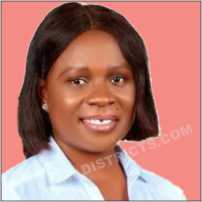

Introduction
This chapter presents the statistical data from the 2010 Population and Housing Census. The section reports on variables such as the household size and composition, marital status of the population, nationality composition of the population in the district as well as religious affiliation of the population. The section also looks at the literacy rate as well as the level of education by school attendance of persons 3 years and older. In some cases, comparison will be made between the male and female population.
Table 3.1 indicates that there are 20,053 households in the Upper West Akyem district with nearly more than seventy percent (74.9%) in the rural areas compared with just 15.1 percent in the urban areas. The average household per house for the district according to the 2010 census is 1.5 with the urban areas recording a greater number than the rural areas implying that there are more persons in a house in those settings than in the rural areas.
The average household size for the district is 4.3 comparing with 4 for the region as a whole and interestingly the average household size for the urban area is same for the total district
Household composition and headship
A household means a family that lives together and who share the housekeeping arrangement with a common person identified as the head of the household. Household here does not only mean a family or people living together in the same house. A family can cover more than one household. The Upper West Akim District has a total of 85,875 households according to the 2010 population and housing census. This section focuses basically on the household characteristics in terms of their composition and leadership.
Table 3.1 shows the household population by composition and sex. The Table shows that there are four major components of the household structure in the District, namely: household heads (23.4%), spouses (10.4%), children (42.0%) and other relatives (24.2%). The data shows clearly that one–fifth of the household members are other relatives. This emphasizes the fact that the extended family system is deeply rooted in the Ghanaian society. Of the 85,875, households in the district, 42,249 are male members who are heads in the household; while 43,626 are female members are heads in the household who. The proportion of adopted/foster children within the household composition is least with 0.3 per cent.
Marital Status
A person is said to be married if there is a conceptual agreement between a man and a woman who lives together as husband and wife. However in considering what constitutes marriage, one has to take into consideration the age. A person can only be said to be married if he or she is 12 years and above. Table 3.2 below shows persons 12 years and older by sex, age group and marital status of the Upper West Akim District.
Of the 57,986 persons who are 12 years and older in the Upper West Akim District, the proportion married is 40.6 percent which is higher than the never married (37.1%). Those living together in informal consensual union are 8.8 per cent. The widowed is 6.5 per cent and those divorced and separated are 4.3 per cent and 2.8 per cent respectively. Table 3.2 indicates that 94.0 per cent of persons aged between 12-14 years have never married while 2 .0 per cent of persons aged between 60-64 years have never married. The Table also indicates that 41.4% of the persons aged 65 years and above are widowed. This means that there is high death rate among married persons who are 65 years and above in the district.
Marital status, sex and economic activity
Table 3.3 shows persons 12 years and older by sex, marital status and economic activity. The Table reveals that out of the total population of 57,986 persons in this category, in the district, 37,671 (65%) of them are employed and 2.2 per cent are unemployed while 32.9% are economically not active. The proportion of employed persons who are married is 86.0 percent and 1.5 percent for those unemployed. The percentage of never married is highest for the inactive population (61.5%) followed by the employed (35.3%) and unemployed (3.2%). Those in informal/consensual union/living together are 80.0 percent highest for the employed. The divorced and separated are highest for the employed (83.1%) and (83.6%) respectively while the proportion widowed is highest for the employed (66.3%) followed by the economically in active.
Males predominate in all the marital categories. For instance, the proportion of the employed males who are married is higher (90.1%) than their female counterparts (82.5%), and the percentage is also higher for the never married males (40.1%) compared to their female counterparts. But on the contrary, the percentage is higher for the economically not active females who are never married, informal/consensual union/living together, separated, divorced or widowed.
Table 3.3 also reveals that only 1.1 percent of males who are married that are unemployed whereas a relatively higher percentage of females who are married are unemployed. This means that among females who are married, there is a higher percentage of unemployment rates among them than their male counterparts.
Last but not least, the Table 3.3 shows that the proportion widowed is 38.0 percent higher for females who are not economically active compared to 33.3 percent to their male counterparts.
Date Created : 11/27/2017 6:16:27 AM










 facebook
facebook
 twitter
twitter
 Youtube
Youtube
 +233 593 831 280
+233 593 831 280 0800 430 430
0800 430 430 GPS: GE-231-4383
GPS: GE-231-4383 info@ghanadistricts.com
info@ghanadistricts.com Box GP1044, Accra, Ghana
Box GP1044, Accra, Ghana